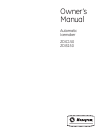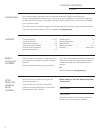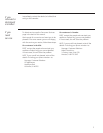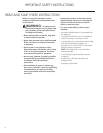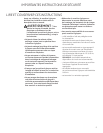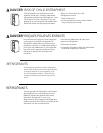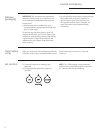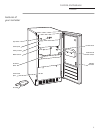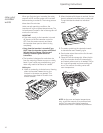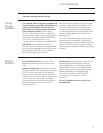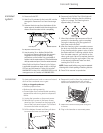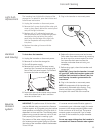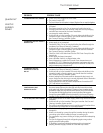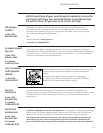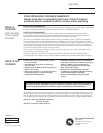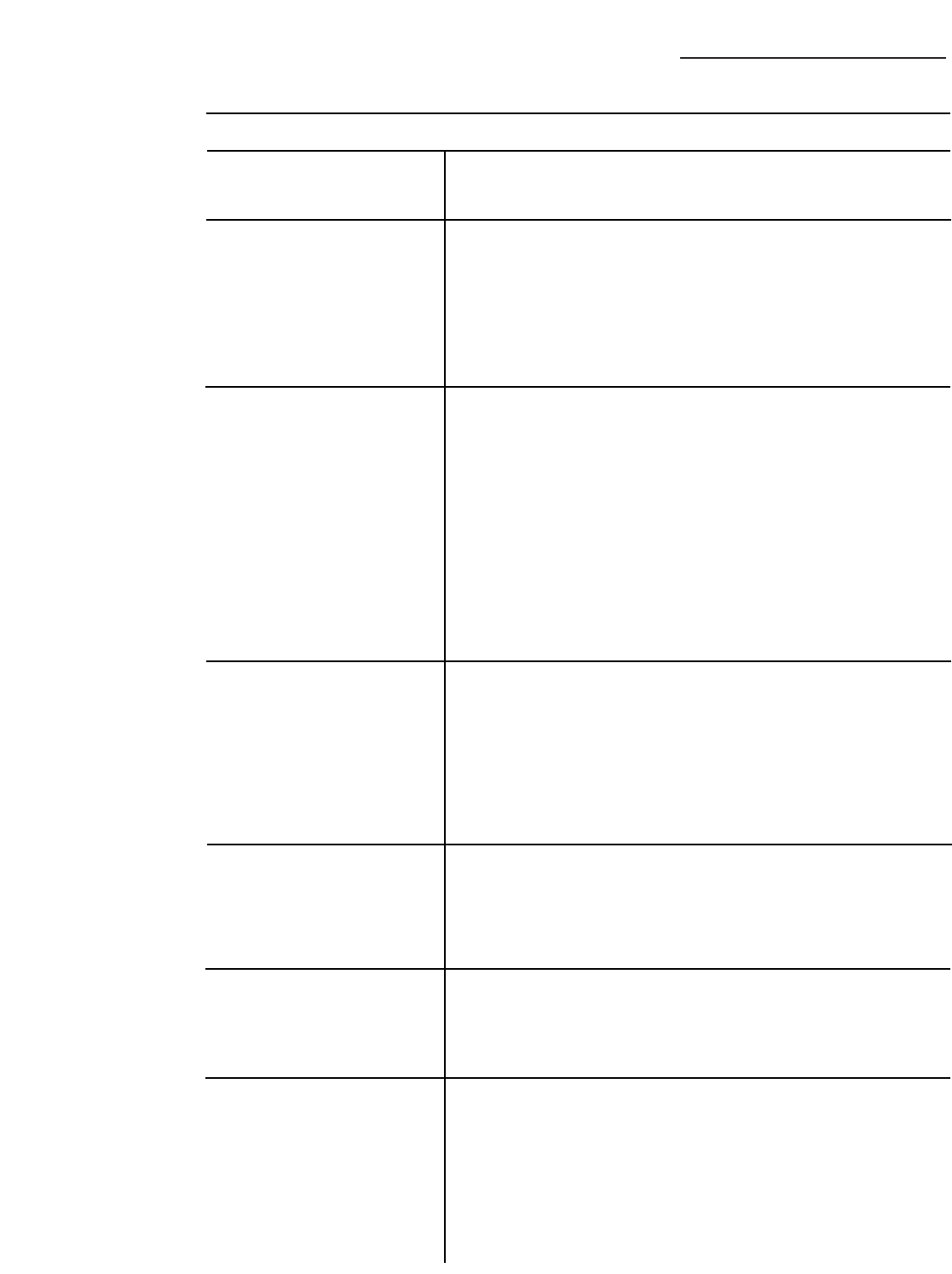
The Problem Solver
Icemaker
14
Questions?
Use this
problem
solver!
ICEMAKER PUMPS
CONTINUOUSLY, BUT
PRODUCES NO ICE
• Power cord is not plugged into a live outlet.
• The control is set at OFF.
• The fuse is blown/circuit breaker is tripped. Replace fuse or reset the breaker.
• High mineral content in the water supply. Water may need to be filtered
or treated.
• Food items stored in ice bin. Do not store any foods in the ice bin.
• Packaging materials were not removed. Make sure that all packaging
materials were removed at the time of installation.
• Ice storage bin needs cleaning.
• Scale has built up in the icemaker. If there is white scale buildup in the
icemaker’s water or freezing system, you should clean the icemaker.
See Care and Cleaning—Icemaker System.
• The control is set at OFF.
• Water supply is not connected.
• Condenser is dirty. Dirt or lint may be blocking the airflow through the
condenser. See Care and Cleaning—Condenser.
• Scale has built up in the icemaker. If there is white scale buildup in the
icemaker’s water or freezing system, you should clean the icemaker.
See Care and Cleaning—Icemaker System.
• Check for a kink in the drain hose from the ZPK1 Drain Pump Kit to the
house drain.
• Water supply has been interrupted.
• Have a plumber check for a clogged water valve.
• Room temperature is colder than normal. Room temperature must
be above 55˚F (13˚C). Otherwise, bin thermostat may sense cold room
temperature and shut off even though the bin is not full of ice. Also, unit
may not restart once it does shut off.
• Condenser is dirty. Dirt or lint may be blocking the airflow through the
condenser. See Care and Cleaning—Condenser.
• Scale has built up in the icemaker. If there is white scale buildup in the
icemaker’s water or freezing system, you should clean the icemaker.
See Care and Cleaning—Icemaker System.
• Water is leaking from the water reservoir because the drain cap is not
secure. Make sure the drain cap is securely tightened. Refer to illustration
in Care and Cleaning—Icemaker System section.
• Room temperature is too hot. Room temperatures of more than 90˚F
(32˚C) will reduce ice production.
•
The ice sheet is trapped on the cutter grid. Unplug the icemaker or
disconnect power. Remove the cutter grid cover and move the ice sheet
to the cutter grid. Refer to illustration in Features of your icemaker section.
Reinstall the cutter grid cover and reconnect power. Turn on the icemaker.
The icemaker will reset itself and start a new cycle after flushing water
through the system. NOTE: Follow the directions in the Care and Cleaning—
Icemaker System section to clean with the Nickel Safe Ice Machine Cleaner.
• High mineral content in the water supply. Water may need to be filtered
or treated.
• Scale has built up in the icemaker. Clean your icemaker. See Care and
Cleaning—Icemaker System section.
• The ice bin is not refrigerated, so ice not regularly used will melt and form
clumps. Break the clumps with the ice scoop provided.
• After an ice-making cycle, you may hear ice cubes dropping into the
storage bin.
• Water is circulated by a pump through the icemaker during the entire
ice making cycle. Water is added once per ice-making cycle.
• The compressor may cause a clicking or chirping sound when attempting
to restart.
• The flow of refrigerant through the refrigerating system may make a
gurgling noise like boiling water.
• A “whooshing” sound may indicate the water supply is not connected
properly, the water supply is turned off or the drain cap is loose.
PROBLEM POSSIBLE CAUSE
ICEMAKER DOES NOT OPERATE
ICE CUBES HAVE ODOR/TASTE
ICEMAKER IS ON, BUT DOESN’T
PRODUCE ICE
ICEMAKER IS ON, BUT
PRODUCES LITTLE OR
NO ICE
ICE IS THIN, SOFT OR CLUMPED
ICEMAKER NOISES



